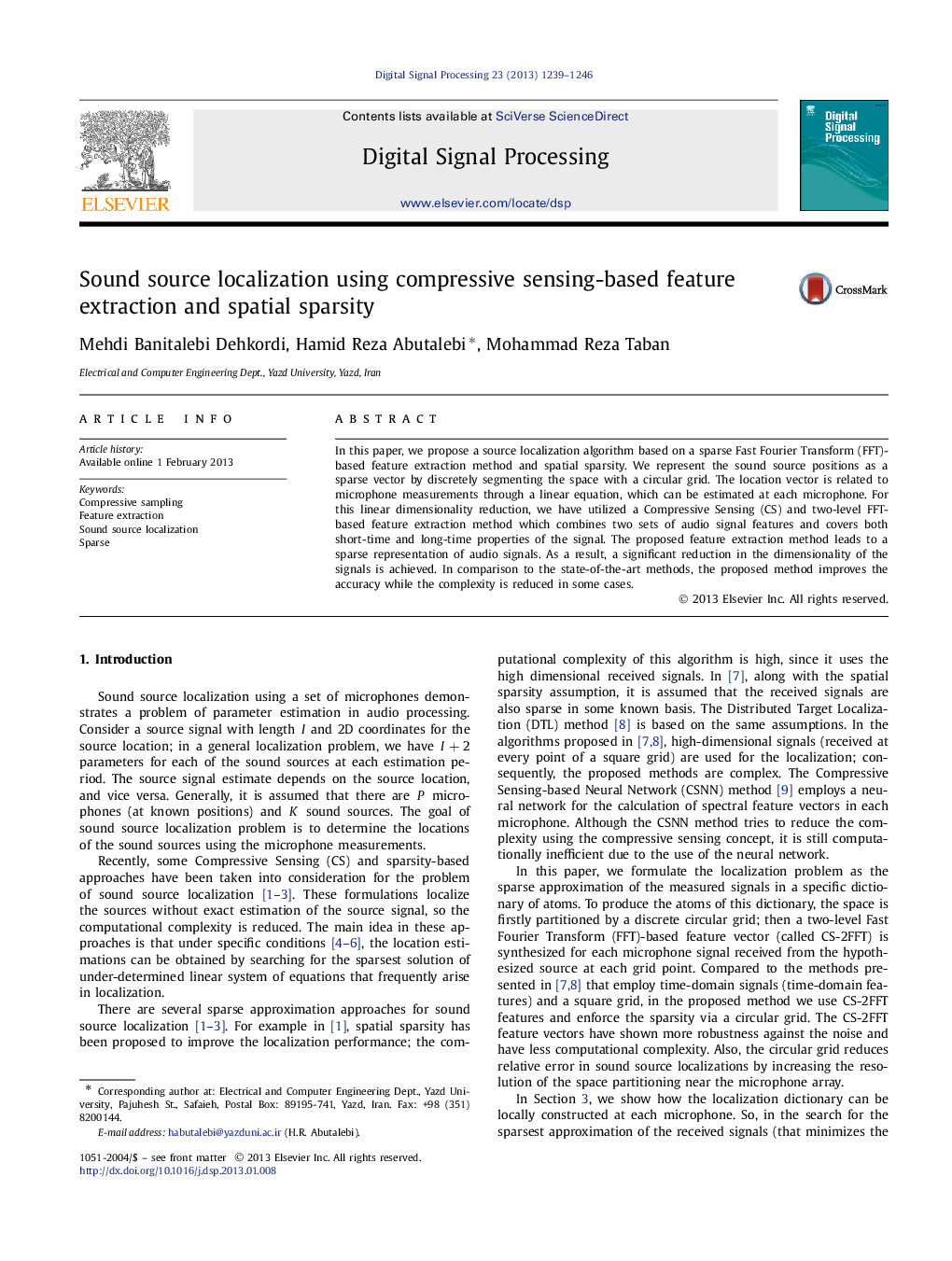| Article ID | Journal | Published Year | Pages | File Type |
|---|---|---|---|---|
| 564852 | Digital Signal Processing | 2013 | 8 Pages |
In this paper, we propose a source localization algorithm based on a sparse Fast Fourier Transform (FFT)-based feature extraction method and spatial sparsity. We represent the sound source positions as a sparse vector by discretely segmenting the space with a circular grid. The location vector is related to microphone measurements through a linear equation, which can be estimated at each microphone. For this linear dimensionality reduction, we have utilized a Compressive Sensing (CS) and two-level FFT-based feature extraction method which combines two sets of audio signal features and covers both short-time and long-time properties of the signal. The proposed feature extraction method leads to a sparse representation of audio signals. As a result, a significant reduction in the dimensionality of the signals is achieved. In comparison to the state-of-the-art methods, the proposed method improves the accuracy while the complexity is reduced in some cases.
► We combined CS-based feature extraction and spatial sparsity for source localization. ► Source positions are sparsely represented by segmenting the space with a circular grid. ► The proposed feature vector presents a sparse representation of audio signals. ► Localization accuracy is higher than that of other CS-based localization methods. ► Computational efficiency is superior to that of other CS-based localization methods.
